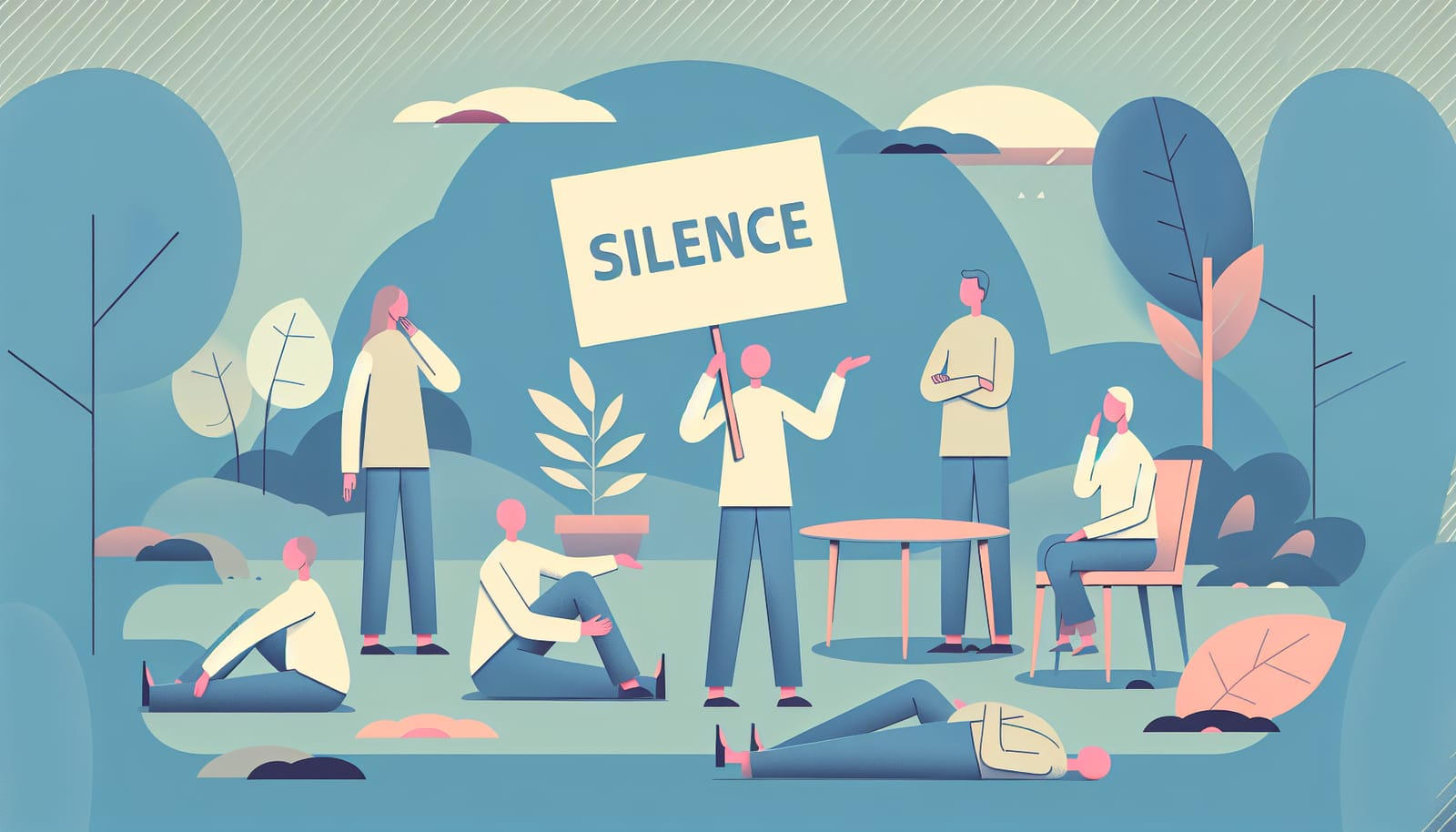In a world brimming with chatter, noise, and the constant hum of digital communication, the idea of silence might seem paradoxical. Yet, silence speaks volumes. It holds a unique place in various cultures, serving as a powerful form of expression, reflection, and connection. This article explores the multifaceted nature of silence, revealing how it shapes communication, culture, and even relationships.
The Many Faces of Silence
Silence can be a powerful tool, serving different purposes depending on the context. It can signify comfort, contemplation, or even discomfort, creating a rich tapestry of meanings across cultures.
Silence as Comfort
In many cultures, silence is a sign of comfort among individuals. It allows for a shared space where people can simply "be" together without the pressure to fill the air with conversation. For instance, in Japan, the concept of "ma" refers to the space or pause between sounds, which is considered as meaningful as the sounds themselves. Spending time with friends or family in comfortable silence signifies a deep understanding and connection—no words are needed to express affection or camaraderie.
Silence as Reflection
Silence can also serve as a means of reflection and introspection. In cultures that prioritize inner peace and mindfulness, such as Buddhism, silence plays a crucial role. Meditation often involves periods of silence to cultivate awareness and connection to oneself. This practice highlights the idea that sometimes, the most profound thoughts come when we allow ourselves the space to listen inwardly rather than outwardly.
Silence as Discomfort
Conversely, silence can create discomfort, particularly in cultures where verbal communication is highly valued. In Western contexts, for instance, an awkward silence during a conversation might feel like an elephant in the room. People often scramble to fill the void, fearing that the silence might imply disinterest or tension. In these instances, silence can evoke anxiety and uncertainty, showcasing its dual nature as both comforting and uncomfortable.
Cultural Perspectives on Silence
Different cultures interpret silence in diverse ways, shaping how individuals communicate and engage with one another.
Indigenous Cultures
Many Indigenous cultures view silence as a vital aspect of communication. For instance, among the Navajo people, silence is often used as a means of respect and contemplation. The value placed on listening before speaking fosters a deeper understanding and appreciation for the spoken word. This practice emphasizes that silence can be just as meaningful as conversation, allowing for thoughtful reflection before contributing to a dialogue.
Scandinavian Countries
In Scandinavia, particularly in countries like Finland and Sweden, silence is often embraced as a positive trait. The Finnish concept of "sisu" embodies this idea, encouraging individuals to find strength in stillness and resilience. In social settings, it is common to encounter moments of silence that are not uncomfortable but rather reflective. This cultural norm promotes a sense of ease and acceptance, demonstrating that silence can be an integral part of social interactions.
Japanese Culture
As mentioned earlier, Japanese culture also values silence, particularly in the form of "ma." This appreciation for pauses in conversation allows for deeper thought and consideration. Silence in Japan is often seen as a sign of respect, particularly in formal settings. The art of listening is highly regarded, and individuals are encouraged to think before they speak, further enriching the dialogue.
Silence in Modern Communication
In our fast-paced digital age, the role of silence has evolved yet again. Social media, text messaging, and instant communication have transformed how we engage with one another, often prioritizing speed over depth. But silence still plays a critical role in our interactions, even if it’s not always obvious.
The Power of the Ellipsis
In the realm of online communication, silence often manifests in the form of the ellipsis (…). This seemingly simple punctuation mark can add layers of meaning and emotion, leaving readers to interpret the unsaid. An ellipsis can imply hesitation, anticipation, or even an unresolved conversation. In this way, silence in digital communication creates a space for the reader's imagination, allowing them to fill in the blanks.
Ghosting: The Silent Treatment in a Digital Age
On the flip side, the act of ghosting—where one party suddenly cuts off communication without explanation—illustrates a more negative aspect of silence in our modern interactions. This form of silence can leave individuals feeling confused and abandoned, highlighting the emotional weight that silence can carry in relationships. The lack of closure often leads to lingering questions and unresolved feelings, emphasizing that not all silence is golden.
Embracing Silence in Our Lives
As we navigate a world filled with noise, embracing silence can offer a refreshing perspective. Here are some practical ways to incorporate moments of silence into our daily lives:
Mindfulness and Meditation
Practicing mindfulness and meditation allows individuals to cultivate a deeper awareness of their thoughts and emotions. Setting aside just a few minutes each day for silent reflection can lead to greater clarity and peace of mind.
Nature Retreats
Spending time in nature can provide a perfect opportunity to embrace silence. Whether it’s hiking in the woods or sitting by a tranquil lake, allowing nature’s sounds to envelop you can create a sense of calm and connection.
Intentional Conversation
In conversations, practice intentional listening. Allow moments of silence to naturally occur, giving both parties the space to reflect before responding. This can lead to more meaningful exchanges and a deeper understanding of each other’s perspectives.
Conclusion: The Unspoken Language
Silence, with all its nuances, is a powerful form of communication that transcends words. From the comforting pauses shared between friends to the deep contemplative moments in meditation, silence holds a significant place in our lives and cultures. By exploring the various dimensions of silence, we can learn to appreciate its value and embrace the moments of stillness that enrich our connections with ourselves and others.
So next time you find yourself in a moment of silence, remember: sometimes, saying nothing truly says everything.
